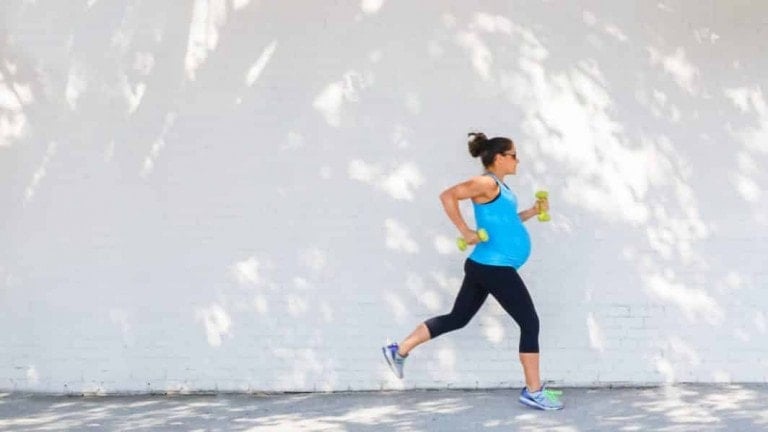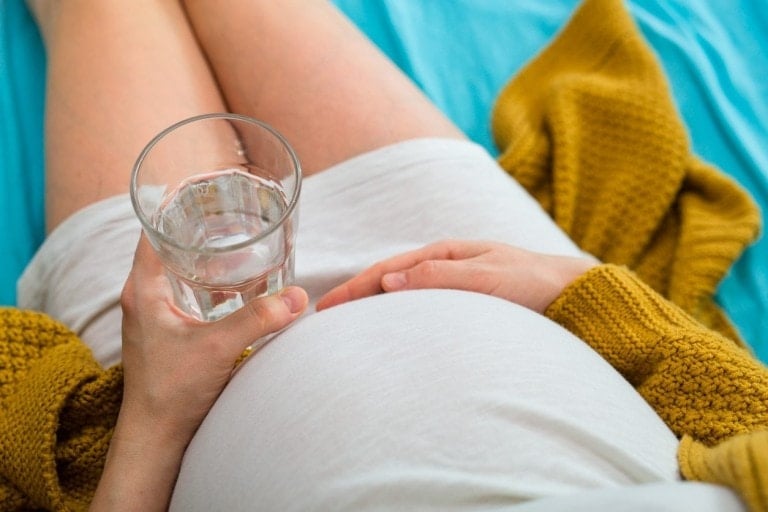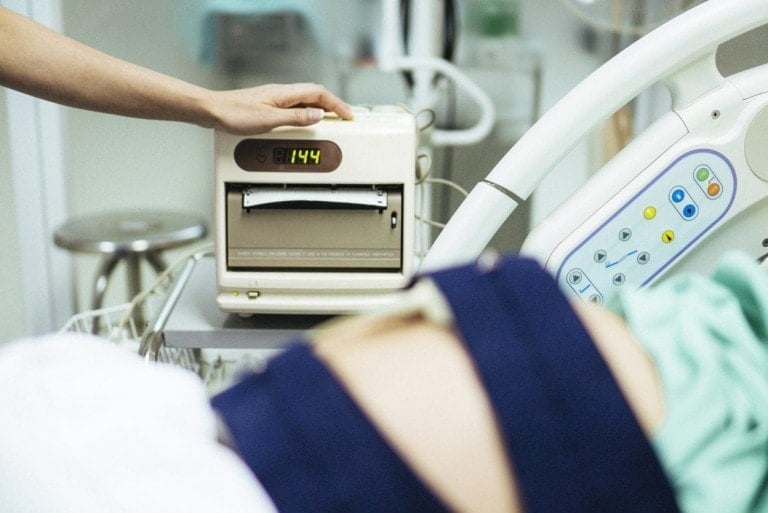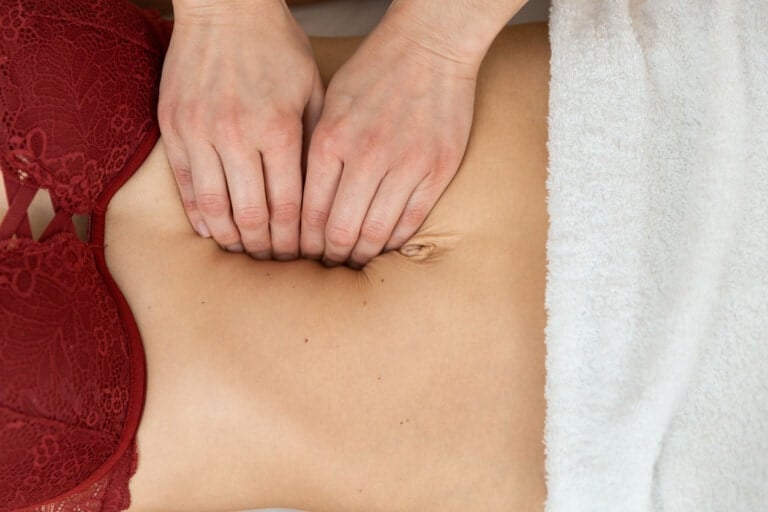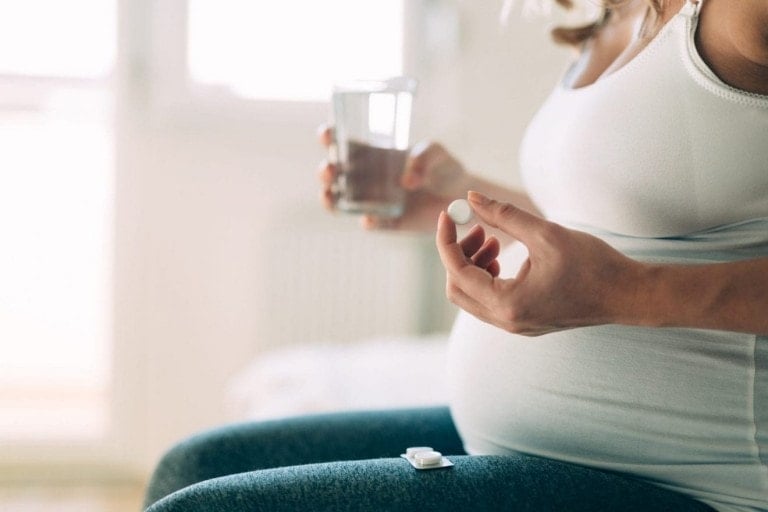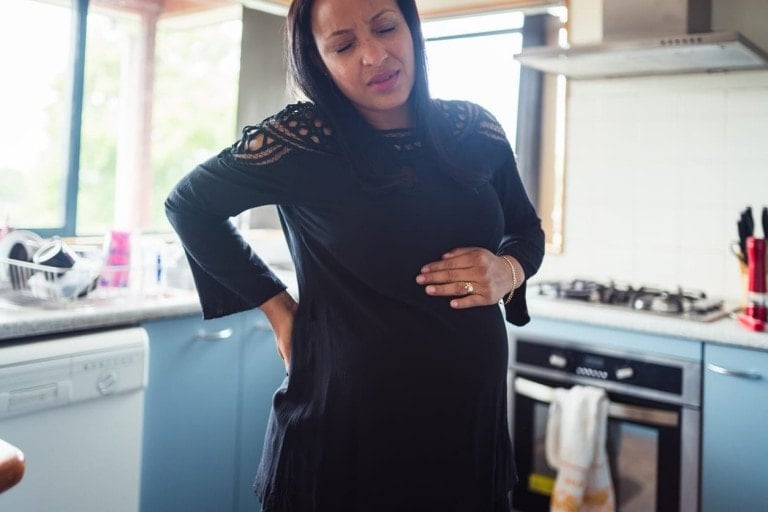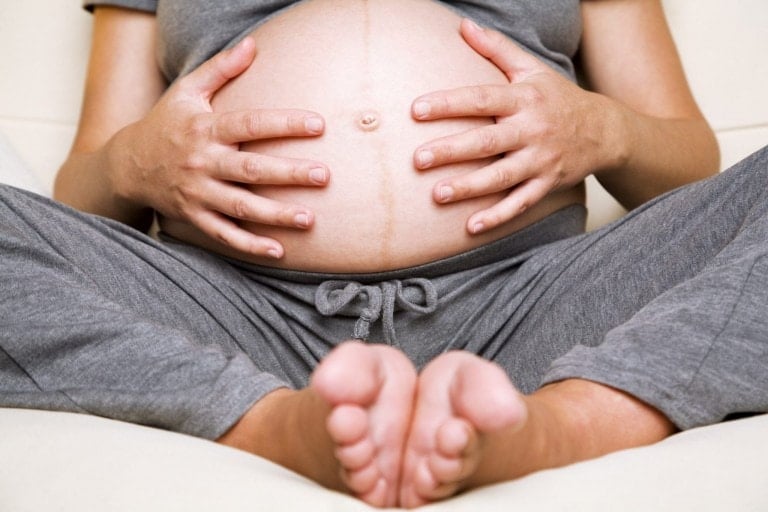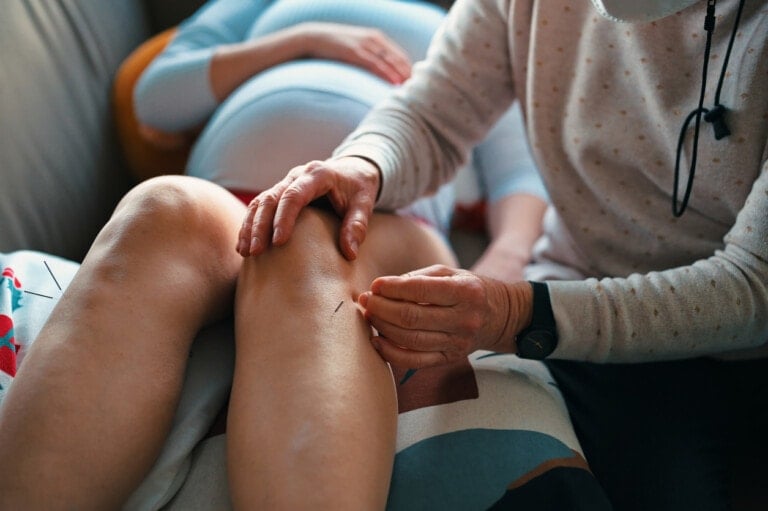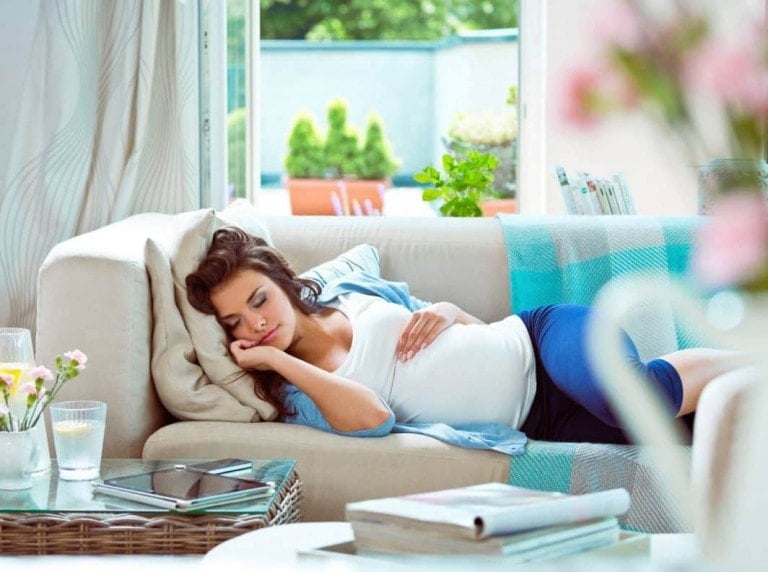Swelling is a common symptom women experience during pregnancy — when the fluid in the body tissues accumulate and expand. Not only is the body doubling the amount of blood and body fluids to support the woman and developing baby, but there is also more and more pressure around the pelvis as the baby grows. With that pressure, it can slow down the circulation of blood and body fluids, which can result in swelling.
Sluggish circulation (as baby grows, so does the uterus, which impacts the return of blood to the heart) mixed with normal pregnancy water retention that comes from changing hormones is common during pregnancy. It can cause swelling in the hands and feet of expecting moms.
When it comes to swelling during pregnancy, don’t worry. Slight swelling of your hands and feet is normal, and your body will get rid of the extra fluid after you have your baby. This is why you’ll pee frequently and sweat a lot for a few days after delivery.
But still, it’s not fun to be puffy.
Thankfully, there are a few things you can do to reduce pregnancy swelling as much as possible.
How to Reduce Swelling During Pregnancy
1. Water
Be sure to keep up with your water intake during pregnancy! You may be tempted to skimp on liquids to combat swelling, but you need to drink plenty of water because staying hydrated helps prevent fluid retention. All pregnant mamas will experience swelling during pregnancy in some form or another due to a normal and necessary increase in body fluids . . . but the more water you drink, the better if you want to ward off that puffy look. Lots of women think drinking lots of water = lots of water with water weight, when in fact the opposite is actually true. Drinking plenty of liquids can keep excessive water retention under control! (Another collective pregnant mom cheer.)
Other benefits of staying hydrated during pregnancy include:
- Transporting nutrients to you & your baby. Water facilitates the absorption of essential nutrients into the cells and transports vitamins, trace elements, minerals, and hormones to the blood cells. It’s those nutrient-rich blood cells that reach the placenta and ultimately your baby . . . all thanks to WATER!
- Aiding in waste removal. As gross as it sounds, when we’re pregnant, we’re excreting for two . . . Water dissolves the waste products, and it helps flush them from the kidneys. Adequate water intake also helps to move solid wastes more speedily down the digestive path, which is great to help with that common pregnancy constipation.
2. Left Side
It’s helpful for circulation to lay on your left side as much as possible. Sleeping on your left side improves circulation and decreases swelling by reducing pressure on your vena cava (the body’s largest vein), located on the right side of the body.
3. Move
Exercise is essential to reduce swelling during pregnancy. It can be as simple as a leisurely 30-minute walk and will do wonders for circulation and blood flow. In addition to daily movement, resistance training that moderately elevates the heart rate and has you working up a sweat will help to improve circulation and decrease swelling as well as provide both strength and cardio benefits to maintain a healthy pregnancy.
If you’re not sure where to begin when it comes to staying active during pregnancy, here are some ideas:
- Strength train. Strengthening exercises to help build the muscles that support your back and legs, including your abdominal muscles, keep low back pain minimal. I encourage pregnant moms to aim for three weight training sessions per week and focus on using weights with good form.
- Stretch. Stretching exercises to help the muscles that support the back and legs become more flexible. Be careful to stretch gently, because stretching too quickly or too much can put further strain on your joints, which have been made looser by pregnancy. Prenatal yoga is one good way to stay limber, and it can help improve your balance, too.
- Walk. If you’re not feeling up to a full workout, at the very least, you should get out and walk. I love leisurely walks and try to move 30-60 minutes almost daily. It’s low impact and easy to make part of your daily routine.
While some normal, physiological swelling is to be expected during pregnancy, contact your doctor or midwife if you have any sudden onset of swelling, especially in your face, or if your swelling is accompanied by headaches, visual disturbances, or abdominal pain.






















